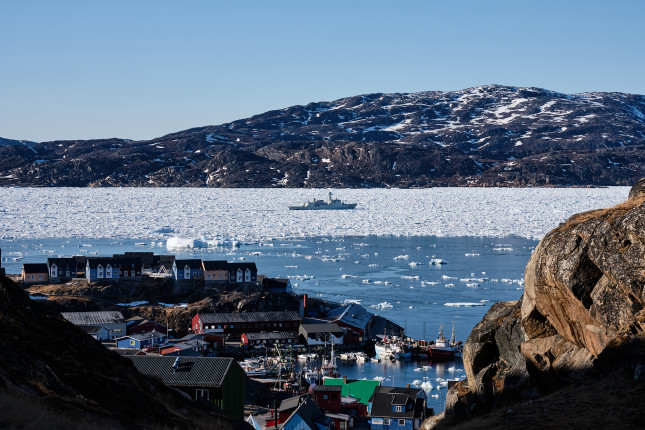-
Introducing “Navigating the Poles”

The polar regions of Antarctica and the Arctic have long captured the world’s imagination as seas and continents covered in unending ice. But the reality of the two regions is quickly shifting, with cascading consequences for the globe.
Temperatures in the Arctic are increasing at more than twice the global average, with mean annual temperatures in some places already 6°C above the 1981–2010 average. New scientific findings show vast regions of the Antarctic ice sheet precariously positioned for collapse. As climate change impacts interact with existing challenges and opportunities in the Arctic and Antarctic, domestic and international attention must be paid to avoid catastrophic risks and identify new modes of cooperation and engagement.
Home to over 4 million people, including many distinct Indigenous peoples (there are at least 40 Indigenous peoples in the Russian Federation alone), the Arctic boasts diverse landscapes that are as important to the people who live there as they are to the global climate and economy. Alaska, the state that makes the United States an Arctic nation, plays a critical role in driving U.S. engagement in Arctic governance. Alaska’s geostrategic reach “is an asset that I don’t think we can overstate,” said Sen. Lisa Murkowski at a recent Wilson Center event hosted by the Polar Institute. “The fact is that we are seeing the Great Power Competition play out literally on a daily basis in the Arctic because of the issues at stake—resources, strategic locations, the environment, and of course the people,” said Sen. Dan Sullivan (R-AK).
“There’s really two Arctics,” said Murkowski. There’s the North American Arctic, which is really lacking in modern infrastructure—everything from roads and communication abilities to just simple aspects of commerce. Then there’s the Scandinavian Arctic, where you have infrastructure that is developed and sophisticated, and economies that are strong and robust. And yet, said Murkowski, basic water and sewer infrastructure are lacking in Alaska, northern Canada, and other parts of the North American Arctic.
Subpar infrastructure, investments, and coordinated policies are just a few of the headwinds that impact U.S. efforts to fully address Arctic and U.S. security interests. Indeed, Canada, the European Union, China, Scotland, and the United States have published aspirational Arctic strategies and policy frameworks in recent years. These strategies address issues as wide-ranging as fisheries regulation and economic development, to science cooperation and oceans governance.
Recognizing the increasingly vital role of the polar regions in global security, the Wilson Center’s Polar Institute is launching a new column on New Security Beat called Navigating the Poles. Through the column, we aim to elevate cutting-edge research, share stories from communities on the frontlines of change, and connect analysis of emerging issues in these regions to broader foreign policy discussions. Once considered remote and isolated, the Arctic and Antarctic regions are now part of the global political, social, economic, security, and geopolitical landscape; this reality requires research and policy analysis now more than ever.
Michaela Stith is a lifelong Alaskan passionate about Arctic peoples’ well-being. She is the Polar Institute Program Assistant at the Wilson Center and previously worked for the Arctic Council Indigenous Peoples’ Secretariat in Tromsø, Norway.
Mike Sfraga is the director of the Wilson Center’s Polar Institute and Global Risk and Resilience Program. An Alaskan and a geographer by training, his work focuses on the changing geography of the Arctic and Antarctic landscapes, Arctic policy, and the impacts and implications of a changing climate on political, social, economic, environmental, and security regimes in the Arctic.
Sources: Intergovernmental Panel on Climate Change, Proceedings of the National Academy of Science of the United States of America, Government of Scotland, State Council Information Office of the People’s Republic of China, United States Air Force, University of Lapland
Photo Credit: Shutterstock.com, All Rights Reserved.
 A Publication of the Stimson Center.
A Publication of the Stimson Center.



